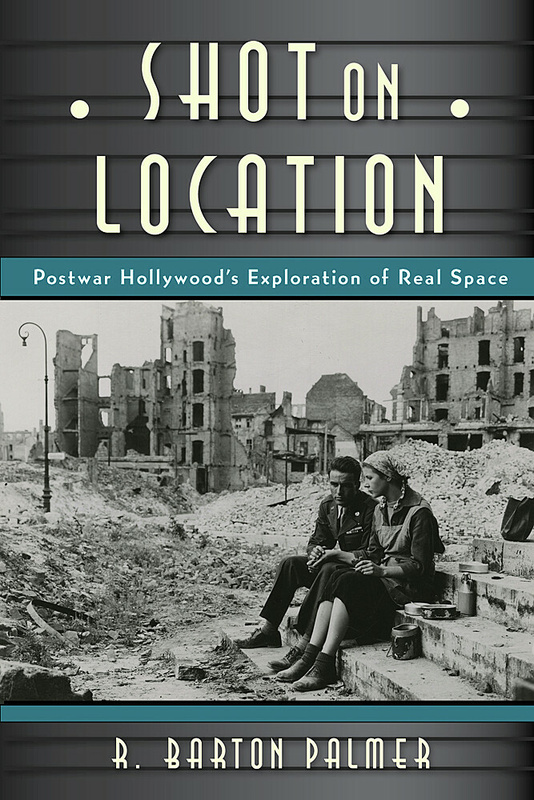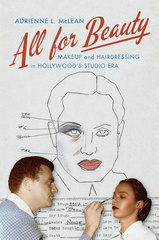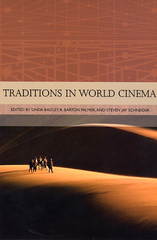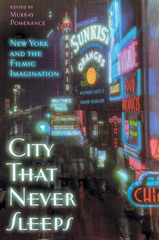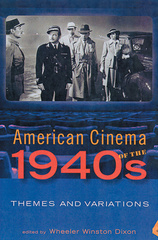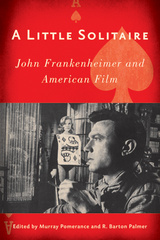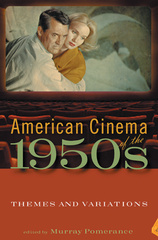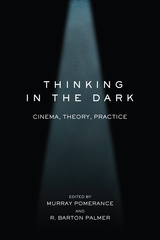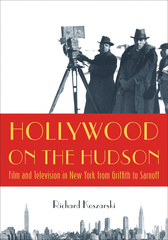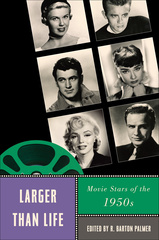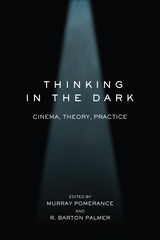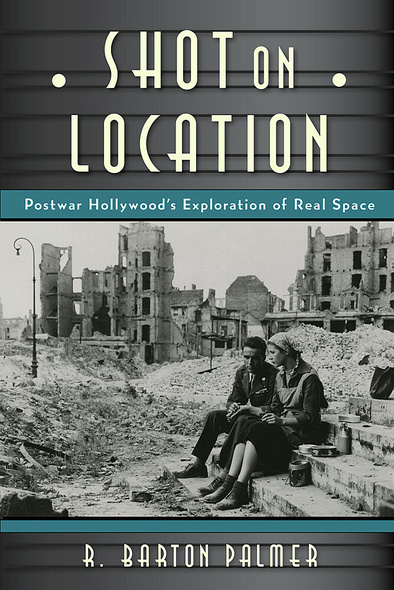
pages, 6 1/8 x 9 1/4
31 photographs
Paperback
Release Date:18 Feb 2016
ISBN:9780813564081
Hardcover
Release Date:18 Feb 2016
ISBN:9780813564098
Shot on Location
Postwar American Cinema and the Exploration of Real Place
SERIES:
Techniques of the Moving Image
Rutgers University Press
In the early days of filmmaking, before many of Hollywood’s elaborate sets and soundstages had been built, it was common for movies to be shot on location. Decades later, Hollywood filmmakers rediscovered the practice of using real locations and documentary footage in their narrative features. Why did this happen? What caused this sudden change?
Renowned film scholar R. Barton Palmer answers this question in Shot on Location by exploring the historical, ideological, economic, and technological developments that led Hollywood to head back outside in order to capture footage of real places. His groundbreaking research reveals that wartime newsreels had a massive influence on postwar Hollywood film, although there are key distinctions to be made between these movies and their closest contemporaries, Italian neorealist films. Considering how these practices were used in everything from war movies like Twelve O’Clock High to westerns like The Searchers, Palmer explores how the blurring of the formal boundaries between cinematic journalism and fiction lent a “reality effect” to otherwise implausible stories.
Shot on Location describes how the period’s greatest directors, from Alfred Hitchcock to Billy Wilder, increasingly moved beyond the confines of the studio. At the same time, the book acknowledges the collaborative nature of moviemaking, identifying key roles that screenwriters, art designers, location scouts, and editors played in incorporating actual geographical locales and social milieus within a fictional framework. Palmer thus offers a fascinating behind-the-scenes look at how Hollywood transformed the way we view real spaces.
Renowned film scholar R. Barton Palmer answers this question in Shot on Location by exploring the historical, ideological, economic, and technological developments that led Hollywood to head back outside in order to capture footage of real places. His groundbreaking research reveals that wartime newsreels had a massive influence on postwar Hollywood film, although there are key distinctions to be made between these movies and their closest contemporaries, Italian neorealist films. Considering how these practices were used in everything from war movies like Twelve O’Clock High to westerns like The Searchers, Palmer explores how the blurring of the formal boundaries between cinematic journalism and fiction lent a “reality effect” to otherwise implausible stories.
Shot on Location describes how the period’s greatest directors, from Alfred Hitchcock to Billy Wilder, increasingly moved beyond the confines of the studio. At the same time, the book acknowledges the collaborative nature of moviemaking, identifying key roles that screenwriters, art designers, location scouts, and editors played in incorporating actual geographical locales and social milieus within a fictional framework. Palmer thus offers a fascinating behind-the-scenes look at how Hollywood transformed the way we view real spaces.
A tremendously important advance in our understanding of landscape, cityscape, and place in postwar American cinema, among the most innovative current work in film and media studies, American studies, English literature, and cultural geography.
A well-documented, clearly written study that enhances understanding of an important trend that still resonates today… Recommended.
Like the tenacious investigators of the post-war semi-documentaries he analyzes (among many other genres and films), Palmer delivers a probing, conceptually sophisticated, multi-faceted, sensitively written account of Hollywood’s return to location shooting. A major achievement that overturns the historical consensus.
Shot on Location provides clear evidence that Hollywood's approach to location shooting was in many ways influenced by Europe both in the philosophy of the filmmakers and in the strategies through which the footage was used to add a sense of authenticity....Shot on Location is a worthy contribution to film history, as it furthers the connections between disparate but exciting facets of film history.
A tremendously important advance in our understanding of landscape, cityscape, and place in postwar American cinema, among the most innovative current work in film and media studies, American studies, English literature, and cultural geography.
A well-documented, clearly written study that enhances understanding of an important trend that still resonates today… Recommended.
Like the tenacious investigators of the post-war semi-documentaries he analyzes (among many other genres and films), Palmer delivers a probing, conceptually sophisticated, multi-faceted, sensitively written account of Hollywood’s return to location shooting. A major achievement that overturns the historical consensus.
Shot on Location provides clear evidence that Hollywood's approach to location shooting was in many ways influenced by Europe both in the philosophy of the filmmakers and in the strategies through which the footage was used to add a sense of authenticity....Shot on Location is a worthy contribution to film history, as it furthers the connections between disparate but exciting facets of film history.
R. BARTON PALMER is the Calhoun Lemon Professor of Literature and the director of film studies at Clemson University in Clemson, South Carolina. He is the author or editor of more than thirty-five books, including Larger than Life: Movie Stars of the 1950s (with Murray Pomerance), “A Little Solitaire”: John Frankenheimer and American Film (with Murray Pomerance), and Thinking in the Dark: Cinema, Theory, Practice with Murray Pomerance (all by Rutgers University Press).
Preface
Acknowledgments
Introduction: Real History, Real Cinema
1. Filming the Transitory World We Live In
2. The Postwar Turn toward the Real
3. Of Backdrops and Place: The Searchers and Sunset Blvd.
4. An American Neorealism?
5. Noir on Location
6. Ramparts We Watch: Legacies
Conclusion: Authentic Banality
Notes
Index
Acknowledgments
Introduction: Real History, Real Cinema
1. Filming the Transitory World We Live In
2. The Postwar Turn toward the Real
3. Of Backdrops and Place: The Searchers and Sunset Blvd.
4. An American Neorealism?
5. Noir on Location
6. Ramparts We Watch: Legacies
Conclusion: Authentic Banality
Notes
Index

